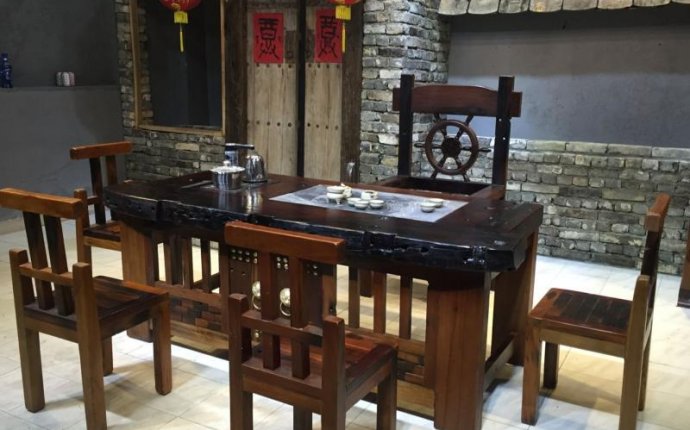
Ancient Furniture
|
Ancient Egyptian furniture: Beds and headrests, chairs and tables, baskets, chests, mats, lamps Printout For best results save the whole page (pictures included) onto your hard disk, open the page with Word 97 or higher, edit if necessary and print.
|
Household goods Houses were mostly sparsely furnished. The majority of Egyptians did not have many belongings that had to be hidden away, so a chest or two or a few baskets would furnish plenty of storing space. Tables were rarely used. Even scribes, more affluent than the average Egyptian, did not write their scrolls sitting at a table, but generally squatted on the floor, holding a wooden board, on which the papyrus was spread, with one hand and writing with the other. Kitchen work was done crouching with the cooking utensils laid out on the floor. In many houses there would be a few low stools, but people often sat simply on the ground. And while the wealthy slept on beds, the poor had to make do with a mattress filled with straw or wool, a mat or even the plain floor. Since the early Dynastic Period at least there existed beds with wooden frames on legs, onto which strips of leather or cloth were fastened. These frames were put together using tenons and mortises. The legs, at first shaped like cattle legs and later more and more like lion paws, were of unequal length, the bed sloping slightly from head towards the foot end, where there often was a foot support. Beds were at times decorated with images of protective household deities such as Bes or Taweret. A number of bed frames have survived as have a few foldable camping beds; double beds are known from clay models and canopies from depictions. The bedsteads were covered with white linen bed sheets. No mattresses have been found, although pictures of them exist. It is however good when beds are readied, The masters' headrests safely secured; Biers looked very much like ordinary beds to the head of which a pair of sculpted lion heads were affixed. The bed as place of procreation is depicted in bed scenes, e.g. in the tomb of Mereruka. Making the bed by covering it with the bed sheet and setting up the head rest symbolize the coming union. The deceased is referred to as "He of the made bed", while the woman being impregnated is "She of the head rest", i.e. they are identified with Osiris and Isis. Like many other African peoples the Egyptians used headrests instead of pillows for sleeping on. They were made of stone, pottery, ivory or, most often, wood. It has been proposed that little cushions were placed on the headrests to soften them, but this conjecture is purely speculative. The rests were at times decorated with images of Bes and other gods, seemingly intended to protect the sleeper from evil at a time when he could not defend himself. Headrests were connected with the rising sun and had therefore great symbolic significance. They often supported the heads of mummies or were placed in the tomb near or under the head of the mummy, at times in conjunction with a hypocephalus, and as symbols of rebirth they figure more prominently in graves than any other piece of everyday furniture. |
|
Three legged wooden table. Around 1450 BCE (Source: University of Tulane website) |
Guests sitting on stools
In funerary depictions these offering tables for the dead are laden with food. Pictures of feasting scenes show similar abundance; the rich liked to spread out their food on tables for all to see, though possibly not for all to enjoy: At the table of one greater than you, Take what he gives as it is set before you; Four-legged stools and collapsible stools with seats made from animal skins or woven with leather strips or plant material were provided for honoured guests, while simpler folk had to sit on pillows or mats spread on the floor. |
| Chairs were known since the Early Dynastic Period at least . Sometimes they were covered with cloth or leather, were made of carved wood like this chair (on the right) from the tomb of Tutankhamen. They were much lower than today's chairs, with their seats sometimes only 25 cm high.
Chair, tomb of Tutankhamen
|
Source: www.reshafim.org.il









